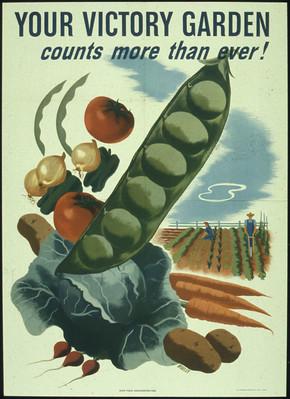During World War II, victory gardens played a crucial role in supporting both the war effort and the morale of civilians on the home front. These gardens provided a way for people to supplement their diets with homegrown produce. They were planted in backyards, parks, and other public spaces. During World War II, victory gardens played a crucial role in supporting both the war effort and the morale of civilians on the home front.
Homegrown Produce & Victory Gardens

The idea for victory gardens originated in Great Britain during World War I, but it was in the United States during World War II that the concept really took off. The government, through the United States Department of Agriculture (USDA), actively promoted and encouraged the planting of victory gardens, providing citizens with seeds, tools, and instructions for gardening. By the end of the war, victory gardens were producing about 40 percent of all the fresh vegetables grown in the United States.
Victory gardens not only provided fresh produce for families, but also helped to ease the strain on the nation’s food supply. With so many men and women serving in the military, there was a shortage of labor to work on farms, and the government was concerned about the ability to feed both the military and the civilian population. Victory gardens helped to fill this gap, allowing people to grow their own food and providing a source of fresh produce for the community.
In addition to their practical benefits, victory gardens also had a positive impact on morale. People felt a sense of pride and accomplishment in growing their own food, and it provided a way for them to feel like they were contributing to the war effort. Communities would often come together to work on the gardens, and it was a way for people to bond and support each other during a difficult time.
Victory gardens were a true symbol of the spirit of the American people during World War II. They not only helped to feed the nation and ease the strain on the food supply, but also provided a way for people to feel like they were doing their part to support the war effort.
Keywords: victory gardens, WW2, homegrown produce, morale, war effort, United States Department of Agriculture, fresh vegetables, food supply, community, American spirit, growing homegrown produce, homegrown produce in a victory garden, victory garden and homegrown produce, gips for homegrown produce
Check out Little Tree Food Forest for articles on food forests and homesteading.
Check out StoryScapes for articles on creative writing.











One thought on “Victory Gardens of WW2: How Homegrown Produce Boosted Morale and Feed the Nation”
Comments are closed.